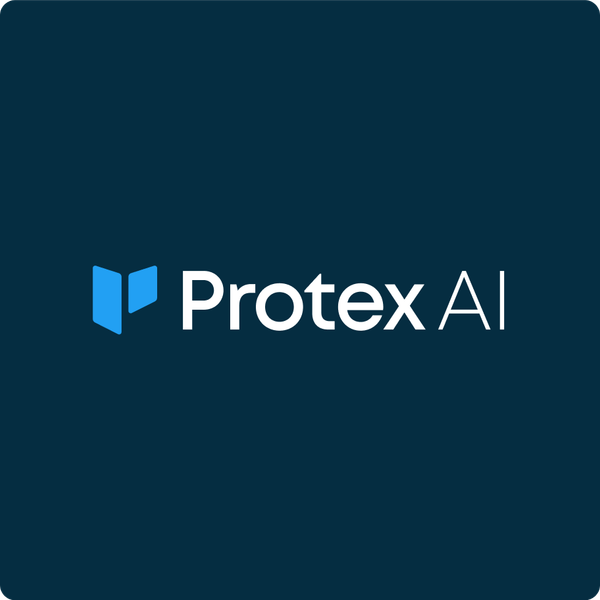
Case Studies
Protex AI
How Protex AI built a flexible, scalable ML pipeline for workplace safety with FiftyOne
Jul 15, 2025
Protex AI streamlined its computer vision pipeline with FiftyOne, accelerating model iteration and improving safety intelligence across 100+ industrial sites.
Sped up model development time by
5x
Sites actively processed through FiftyOne
100+
Custom FiftyOne plugins integrated into the pipeline
10
In this article
Talk to a computer vision expert
Key Results
- 5x faster model iteration by consolidating fragmented tools into a single visual pipeline
- Data from 100+ sites and 1000+ CCTV cameras processed through FiftyOne for data validation, curation, training, and model analysis
- ~10 customized workflows built using FiftyOne’s plugin framework
- Improved collaboration through dataset tagging, URL sharing, and centralized data access
- Deeper model insights through side-by-side performance and data comparisons
“What really stands out about FiftyOne is the flexibility. The plugin framework lets us customize our workflows based on our unique needs, and the mature SDK lets us consolidate more of our pipeline into one tool, avoiding the cost of stitching together multiple systems. FiftyOne integrates directly into our production pipeline in a reliable, scalable way, which is critical for how we operate.” — Patrick Rowsome, Head of Computer Vision Operations, Protex AI
Introduction: Protex AI
Protex AI is a leading provider of AI-powered workplace safety and operations solutions that help organizations build safer, smarter industrial workplaces using real-time computer vision. By leveraging existing CCTV infrastructure, Protex AI enables safety and operations teams to monitor industrial workplace environments and take proactive action. Their technology has driven a significant impact, including an 80% reduction in incidents at major retail, logistics, and manufacturing organizations such as Amazon, DHL, General Motors, and Sysco.
Challenge: Workflow inefficiencies slowed ML development
Protex AI’s computer vision team processes video data from more than 1,000 cameras across 100+ customer sites. Their production computer vision models perform tasks such as object detection, classification, and pose estimation to power real-time safety and operational insights. Using Protex AI, EHS and operations teams proactively prevent accidents and enforce compliance across industrial environments. These safety and operational use cases include:
- Speeding vehicles in facilities
- Improper ergonomics (e.g., unsafe posture and actions such as manual lifting)
- Missing protective equipment (e.g., helmets, gloves)
- Unauthorized access to restricted zones
- Site hazards like spills and clutter that could lead to accidents
Before adopting FiftyOne, the team relied heavily on manual scripts to train models and iterate on experiments. Over time, their home-grown processes became unwieldy, and the need for a central solution for data and model work became evident. Without a centralized system in place, sharing data, debugging model outputs, and maintaining version control added complexity to every iteration.
“It was very clumsy to use a script to generate a video with predictions on it, and then share it around with the team. The lack of a central system for data and models not only slowed model development but also added operational overhead.” — Patrick Rowsome, Head of Computer Vision Operations, Protex AI
Solution: Operationalizing visual data with FiftyOne
Protex AI slowly transitioned from a fragmented, script-heavy workflow to a cohesive visual data engine that powers their daily ML operations using FiftyOne.
The ML engineers initially experimented with open source FiftyOne and soon realized the power of the product. As their scalability and collaboration needs increased, the Enterprise version of FiftyOne was a big draw for the team, and FiftyOne slowly became the central hub for Protex AI’s ML operations
How Protex AI uses FiftyOne
The team uses FiftyOne to ingest CCTV footage from the client's warehouses and sites.
- Ingest and inspect: Ingests raw CCTV footage for visual validation, checking for data issues like corruption or network glitches before it enters the pipeline.
- Curate for training: They curate large video datasets down to high-quality subsets optimized for model training.
- Analyze and refine: FiftyOne is then used to analyze model performance, identify strengths and weaknesses, and guide further data and model refinement.
Protex AI’s ML team also built ~10 internal plugins using FiftyOne’s Python SDK and flexible plugin framework for their niche operations for data filtering, annotation handoff, and running inference jobs, further tightening the loop between data and model refinement.
Results: 5x faster model iteration enabled by flexible workflows
Since integrating FiftyOne, Protex AI has seen measurable improvements in their computer vision workflow: 5x speedup in model iteration, driven by streamlining data curation, centralized collaboration, and the ability to quickly identify model strengths and weaknesses.
- Improved collaboration across teams with shared tagging, URL sharing, and centralized access to datasets and annotations
- Intuitive model analysis: The team found the tool’s ability to view model performance alongside the underlying data extremely helpful. As early testers of this functionality, they found the side-by-side comparison of multiple model versions to be an essential tool for debugging and optimization. It helped the team drill into true positives, false positives, and other performance metrics while staying visually grounded in the actual data.
- Custom plugin framework supporting ~10 internal customized workflows that accelerate development and eliminate repetitive manual tasks
“What really stands out about FiftyOne is the flexibility. The plugin framework lets us customize our workflows based on our unique needs, and the mature SDK lets us consolidate more of our pipeline into one tool, avoiding the cost of stitching together multiple systems. FiftyOne integrates directly into our production pipeline in a reliable, scalable way, which is critical for how we operate.” — Patrick Rowsome, Head of Computer Vision Operations, Protex AI
By integrating FiftyOne into their ML pipeline, Protex AI has accelerated model development, improved debugging efficiency, and delivered safer, more reliable solutions, driving 80 %+ reductions in workplace incidents for their clients.
Talk to a computer vision expert
Loading related posts...
© 2025 Voxel51 All Rights Reserved